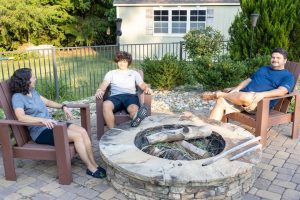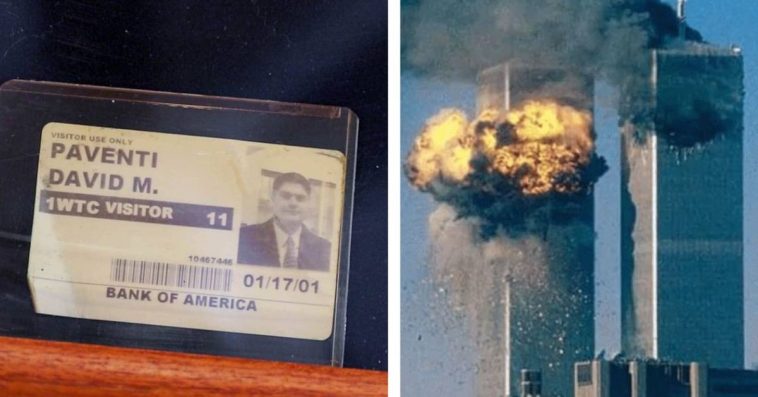On September 11, 2001, he was sitting in the North Tower on the 81st floor. The first hijacked aircraft made contact with floor 93. For business meetings, Charlotte banker Dave Paventi had traveled to New York City the day before.
Paventi recalled the day as being foggy: “I remember I arrived at the workplace, walked over to the windows, climbed up on the heat register to look out, and I couldn’t see a thing.”
“A little suspicious coworker of mine immediately asked, ‘What are you doing?’ That makes me feel uneasy. Then, in a very casual manner, he asked, “How can airplanes not hit this building?” At that moment, I said, “Seriously? Whoever considers something like that?
The conversation took place on September 10, 2001. Paventi felt the entire structure lurch forward before returning to its original position the next day at 8:46 a.m, when he was in an inside conference room. We had offices in San Francisco, so Paventi claimed that when an earthquake struck, his mind immediately switched to hiding under the table.
The North Tower’s Stairwell
Some of his coworkers knew better, having lived through the 1993 World Trade Center bombing, and they started moving fast toward the stairway. Paventi used his mobile phone to call his wife. Lynn Paventi reported that the man had said, “I’m alright, I’m leaving the floor now, and I’ll contact you when I get to the bottom.”
Paventi remembers someone shouting in the background that an airplane had hit the building as they moved toward the steps, adding, “We still didn’t know what had happened.” “It might have been a little plane, was the assumption. At the time, we lacked context for a passenger jet colliding with a structure, Paventi said.
There wasn’t much activity on the stairs, which should reveal something about what was going on above, according to Paventi. As I approached floor 75, I stopped to wait for my seasoned coworker Bob, who was making sure that our floor had cleared out.
Only two persons could fit in the small stairwells. The traffic slowed to a nearly complete stop on the 65th floor. “We had no visibility. It was strangely silent. It was noticeably silent, although you would expect New York to be loud and boisterous. We’d take a few steps down and then stop. A few steps down, stop. That lasted for around 45 minutes.
There were no smartphones at the time. Paventi, however, also possessed a pager in addition to his flip phone. Short emails could be sent and received on the pager, and Paventi had it set up to send him stock-related news.
News that a plane had hit the towers caused the stock market opening to be delayed and spread quickly. Later, reports of terrorist activity and a second plane began to surface. Paventi described the first plane hit as “finally buzzing and saying it was a 767.”
He and his colleague kept these updates to themselves so as not to add to the already tense atmosphere in the stairway.
Paventi also started emailing his wife. “I still recall the first one saying we are on the 56th floor. That day, those emails saved my life, according to Lynn Paventi. The irony is that the pager almost stayed in Charlotte.
Paventi and his wife decided to turn around and get it the day before after he had forgotten it on the way to the airport. I’m unsure how we would have communicated without that pager and those emails, Lynn Paventi said.
It occurred to Paventi and his colleague as they climbed the stairs, “We would stop at each level to feel the doors and see if they were hot, and I would think, ‘Would we be better off going to locate another stairwell? Is there another option? said Paventi.
The moment they reached the 30th floor, all traffic stopped.

The visitor’s pass for the World Trade Center that David Paventi had was set to expire on September 17, 2001|Photo Credits – CharlotteFive
A Rush Of Firefighters Toward The Danger
Firefighters could be seen starting to climb the steps. These brave people convinced everyone that the stairs were open at the bottom and to continue moving down while carrying massive hoses and equipment. “I won’t ever forget this particular fireman.
He stopped, laid his hose on the ground, knelt to regain his breath, and said, “I get to do all this for 35K a year.” Then he picked up the hose again and continued walking. Paventi claimed that it was a true gut check.
Lynn Paventi’s mother-in-law called her from Charlotte, where she was staying. “I know he’s in New York, she added. Can you tell me where he is? Is he okay? She said, “And I had to inform her that he was at the World Trade Center. ”
I believe that was the hardest task I had to complete that day. It can be difficult to inform a mother that their son is in the burning building they are seeing on TV.
Paventi recalled that when he and his colleague finally made it to the lower level, which was lighted by emergency lighting, it appeared to be a scene from the movie “Die Hard.”
“Every window had blown out, the building smelled of gas, and the sprinklers must have been running; it appeared as though a bomb had gone off. As I recall, I exited the building through a broken window after going down an escalator.
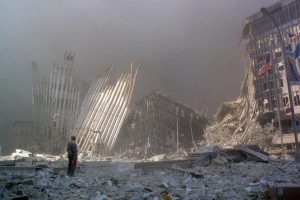
Run, Leave The Building, And Don’t Turn Around.
A police officer yelled at us all to run, get out of the building, and not look back as soon as we were in the courtyard. We then began to take off. Bob turned a corner and hid behind a building about three blocks further down. He and his wife had been on the phone with me. I did so, and as we were moving forward, a massive white cloud suddenly rushed down the street.
We were gathered in the courtyard when a policeman ordered us to run, get out of the building, and not look back. Then we started to take off. Bob rounded a corner and hid behind a structure a few streets down. He had called me while he and his wife were together. I did, and as we were going along, a great white cloud swept down the street.
Terrified Of New Attacks
Paventi and Bob, a coworker, were in a state of shock and had only one objective: to leave Manhattan’s island and reach the mainland.
They finally settled on going to the Queensboro Bridge to try to go to Bob’s brother’s place on Long Island. In his own words, Paventi claimed, “I knew there were only two ways off Manhattan—a bridge or a tunnel, and I thought at least on a bridge you can jump and have some hope of survival.”
Hundreds of people were crossing the Queensboro Bridge’s incoming lanes on foot because the car lanes had been shut down. Paventi recalled, “We started to hear a rumbling noise, and we looked over our shoulder. “We stared as the North Skyscraper—the tower we had just left—melted into the distance. We then started to run away.
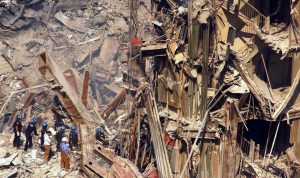
They arrived at Long Island, and the next day they proceeded to Charlotte to visit their families. Paventi still shakes his head at the events after telling this story numerous times.
“You look back on an entire day and reflect on the decisions you made and how one minor change might have changed everything.
When we came to a stop on the stairs, what if we had decided to try to find another staircase? What if anything had hit us if we had stopped moving or taken a wrong turn in the debris cloud?
What if we hadn’t hurried across the bridge and run into the driver of the green Dodge Neon? Imagine if Bob hadn’t discovered the gap in the chain link fence. If we had made a different decision, we might not be here. It’s challenging to remain separated from the idea that someone greater must be directing you.
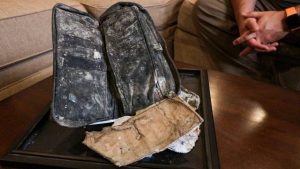
Having worked together in Charlotte for twenty years, Paventi and Bob are still friends and coworkers.
